Greetings Steemians,
"I think of composition as the final frontier in painting. An infinite area of discovery. For this reason, I don't put stock in any "rules" of composition. Rules are finite. Rules constrain. The primary "rule" I have is to ask myself, "Does it look good?" And so the nature of painting is to search. You can plan a painting to death, but you won't really know a damn thing until brushstrokes happen.
In Queens, I wanted to capture a feeling of space and quiet as contrasting support for the intense foci. I wasn't sure if the large restful area, and thus the entire painting, would be successful until I was nearly finished. It came down to exactly how the emptiness was painted. When it comes to composition, the how is just as important as the what."
(Excerpt from my FIGURE book, page 12)
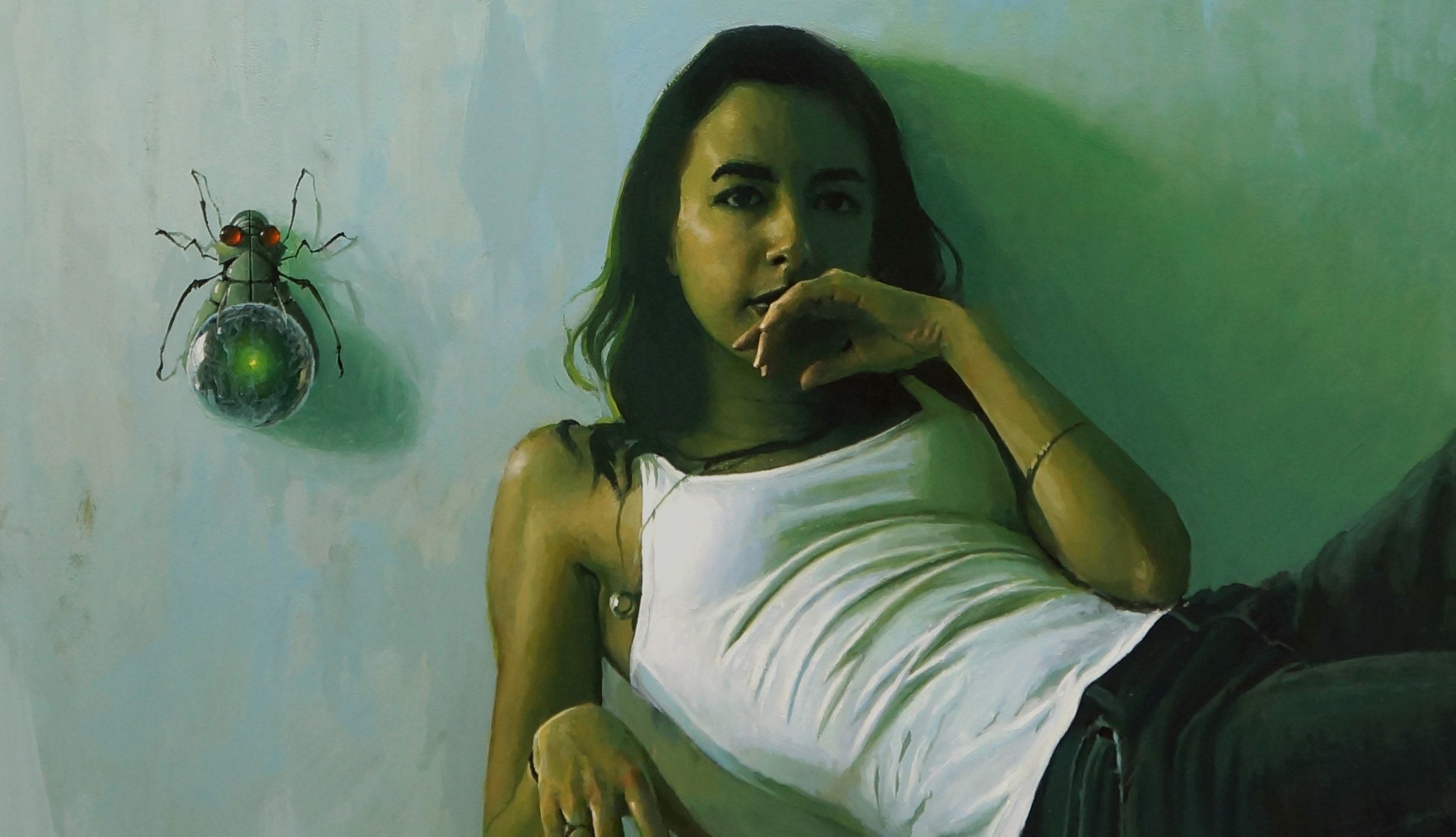
detail
Not many stage photos of this one. Sometimes I forget when I'm in the zone. First stage:
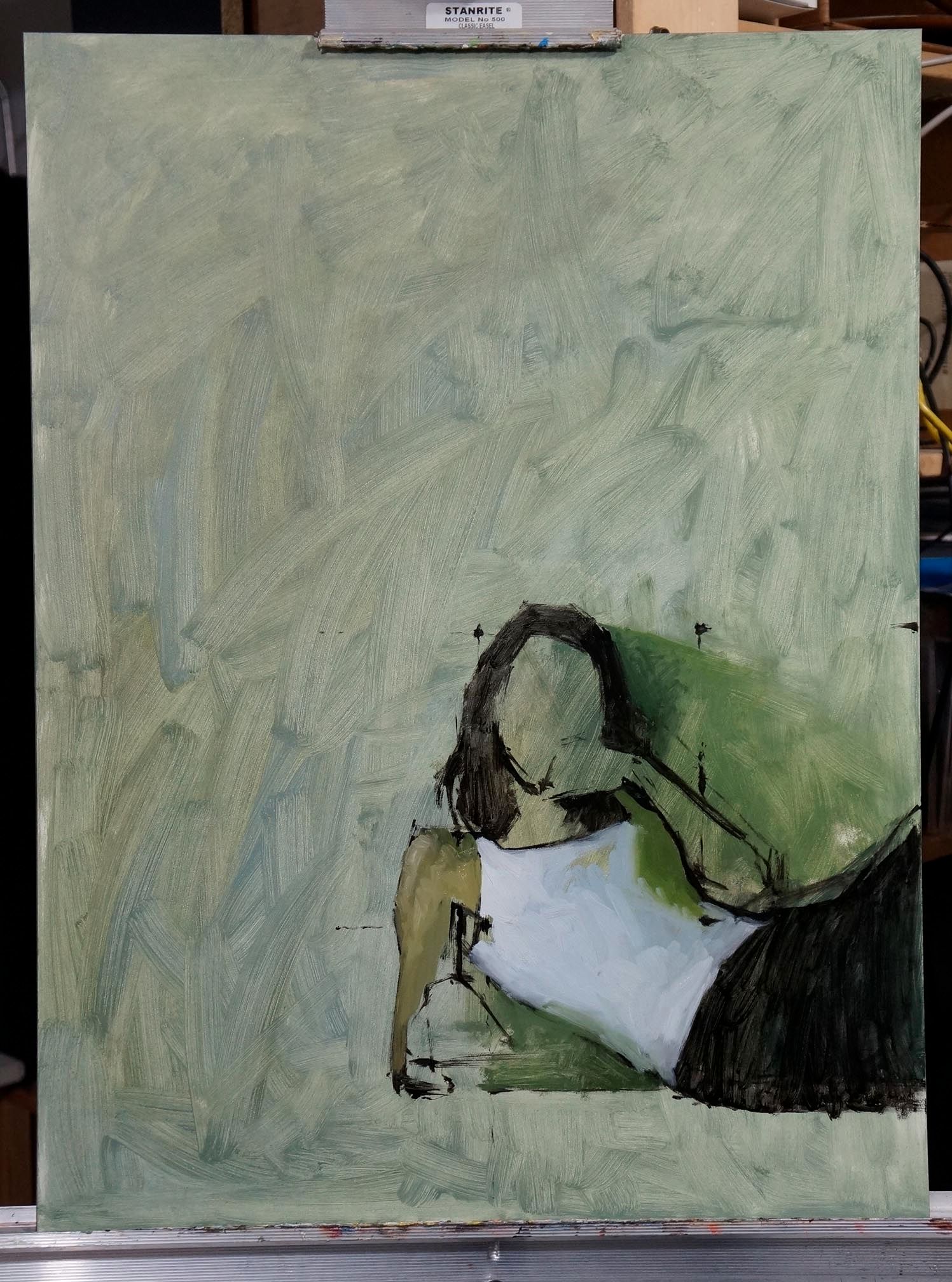
Palette:

See that empty spot on the palette? I quickly realized that I wasn't going to be using any reds in this painting, so I omitted my alizarin crimson and cadmium red.
(For the curious: From L-R: Ivory Black, Phthalo Blue, Ultramarine Blue, [Alizarin Crimson, Cadmium Red] Cadmium Orange, Burnt Umber, Raw Umber, Yellow Ocher, Cadmium Yellow, Cadmium Lemon, Titanium White. These are Griffin Alkyds, and I'm using Neo Megilp medium. I've been alternating between alkyds and traditional oils. Both have their advantages. Alkyds dry very fast, sometimes convenient for particular painting effects and for quick delivery to a venue. Traditional oils dry slower, allowing for longer wet-into-wet painting, which I mostly enjoy. I have noticed that the alkyds offer inferior opacity when I want that. Particularly noticeable in thick passages of red, orange, yellow placed over a dark. Weaker color content? I'm not sure. In other ways, the alkyds are very vibrant. Traditional oils are more forgiving and versatile, so I would always recommend those to a student. I love both.)
Next stage:
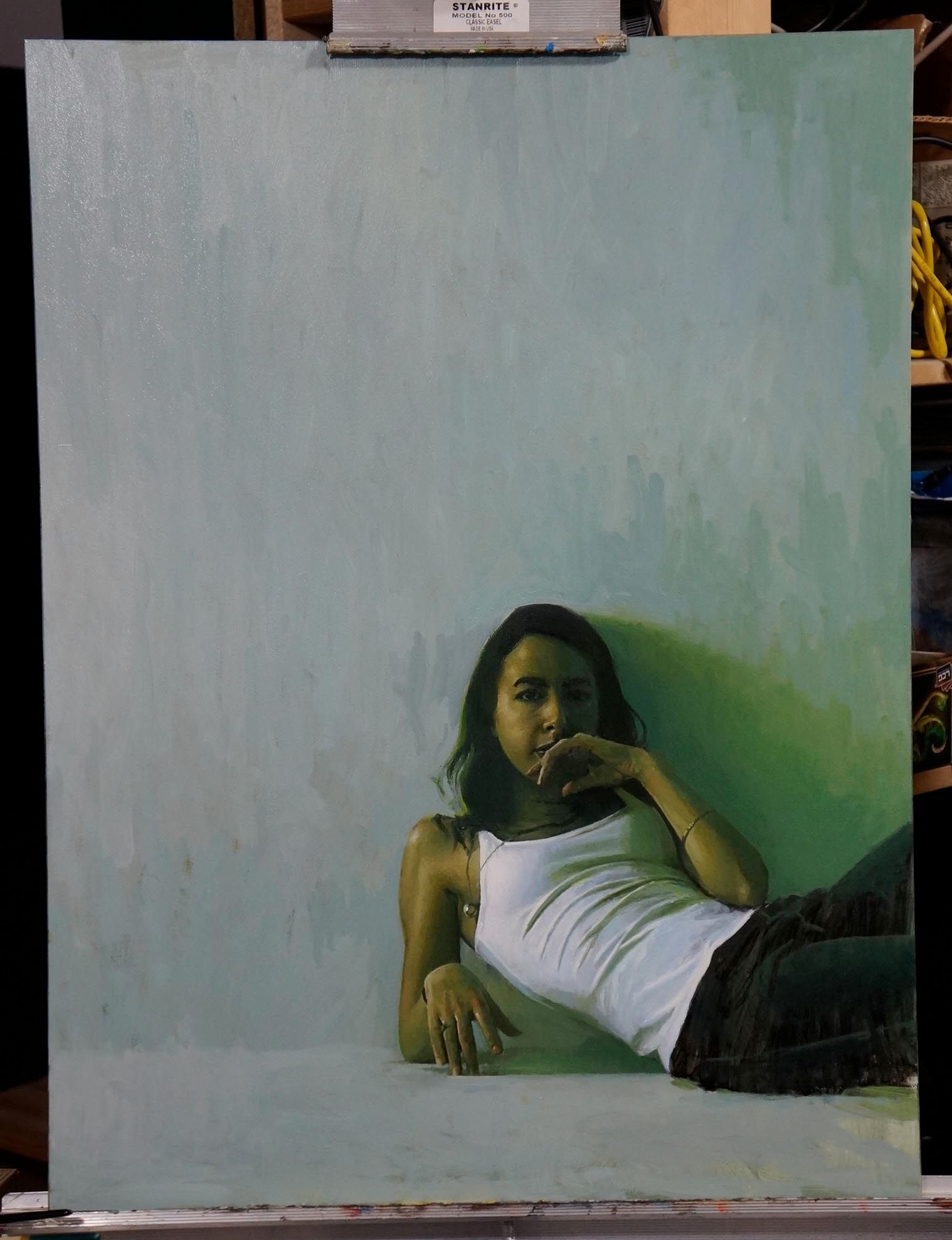
And the finished painting, "Queens" (24x18 oil on panel, 2015):
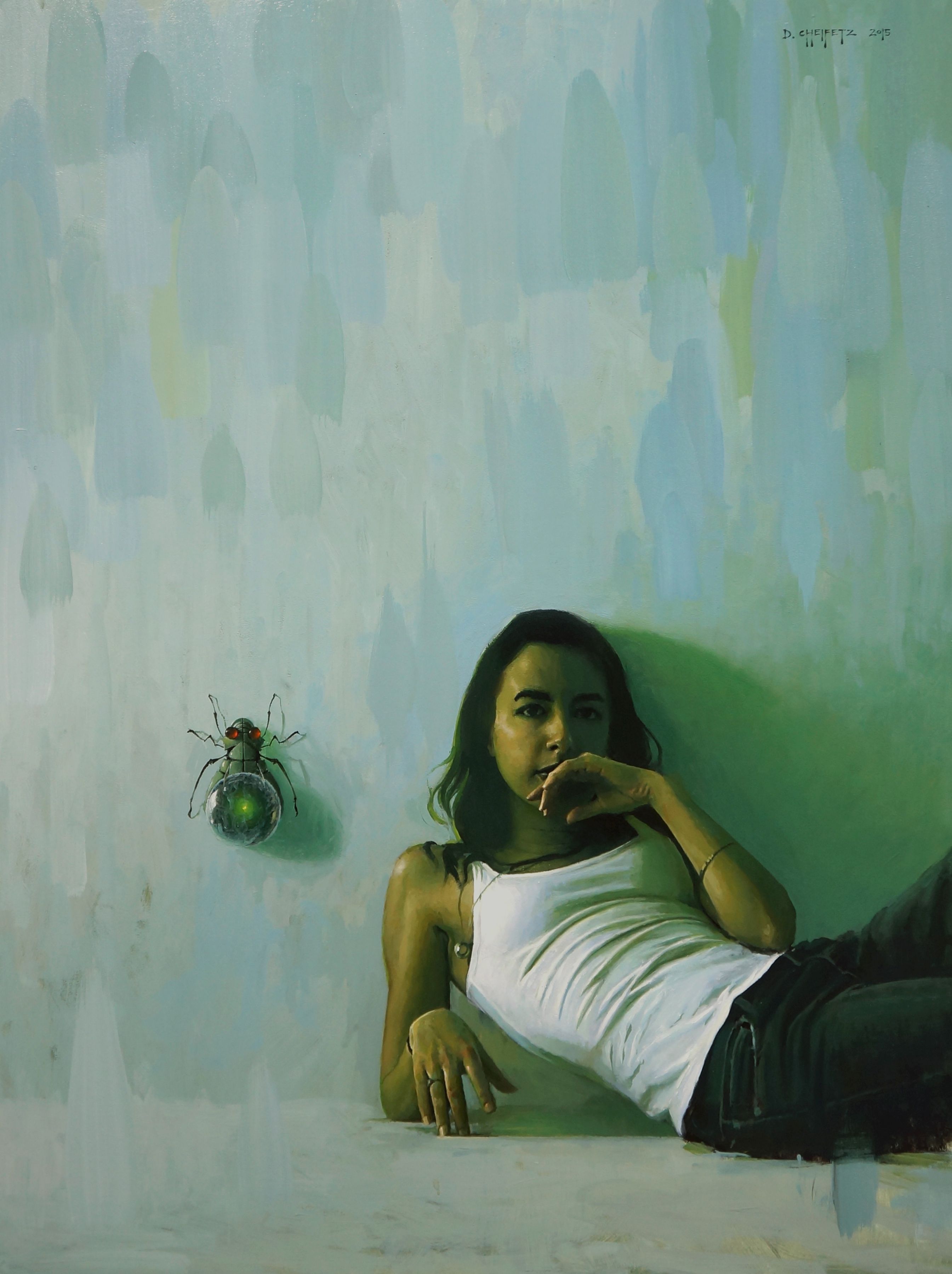
Details:
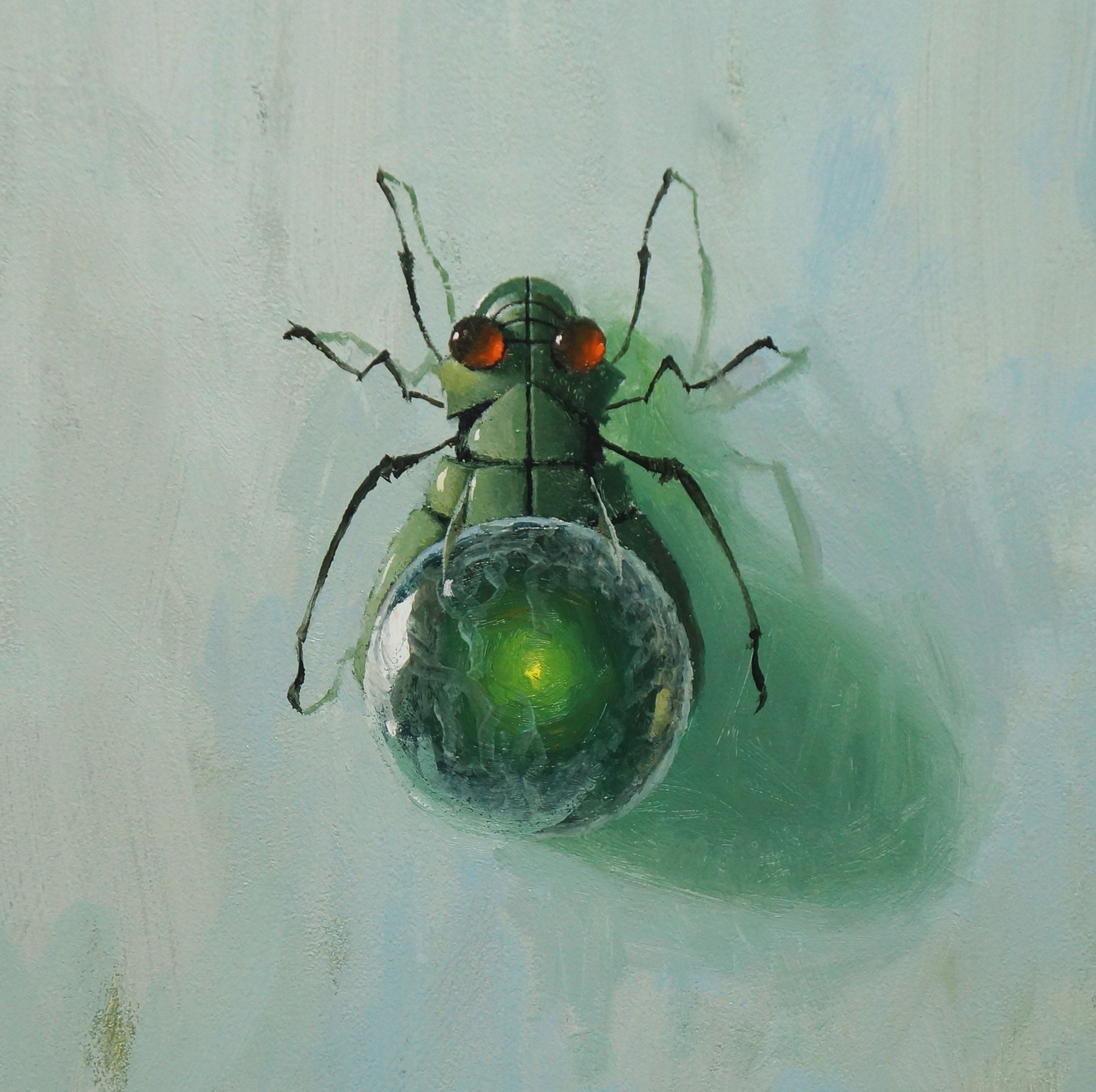
The "bug" above is a variant of a creature that has evolved over the years in many of my paintings. It started as a way to incorporate illustration and more imaginative elements into my work, and evolved into something more. It is called a Flrrbl. Or Flrrblz (plural). For the origin/explanation of Flrrbl go HERE. And if you're so inclined, you can view this [almost complete] visual history of the Flrrbl in one loooong image of crops from many paintings: Visual History of Flrrbl.

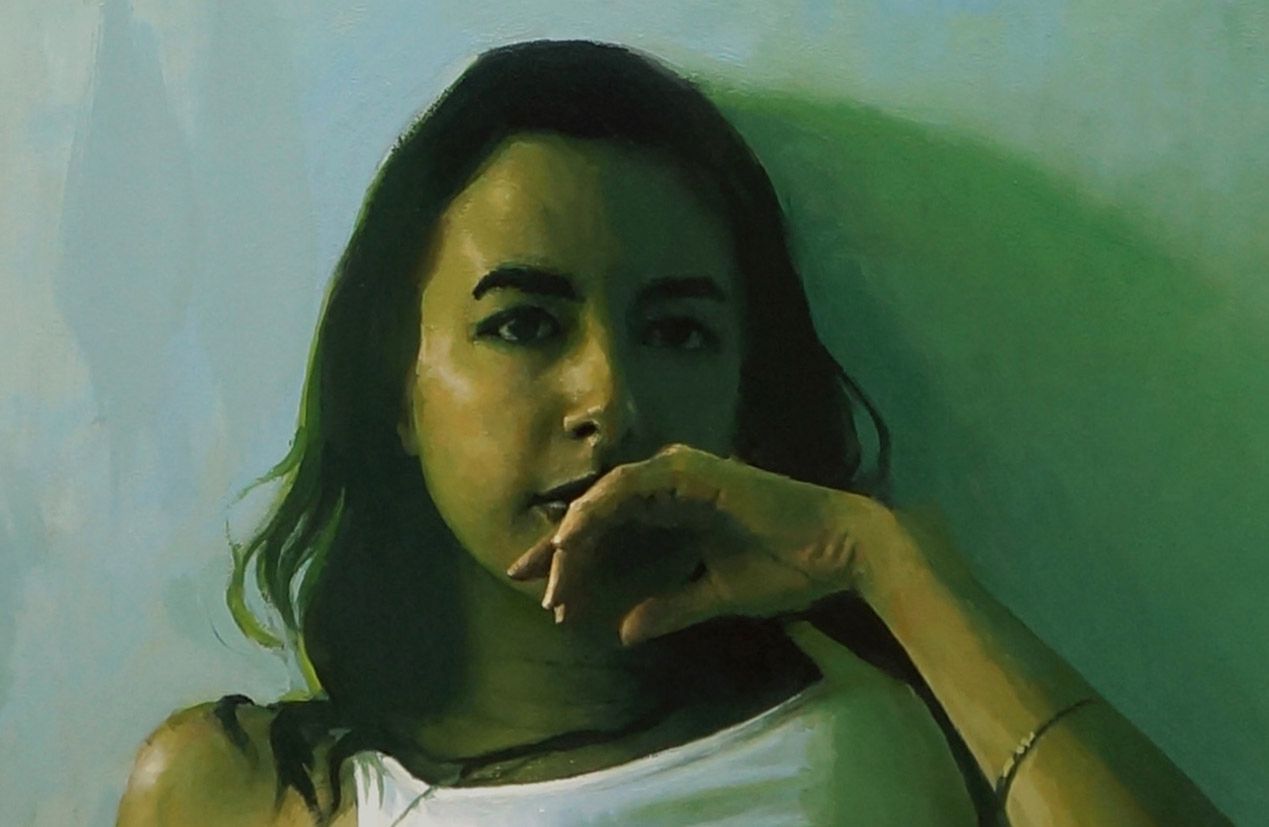
More about the model HERE
Thanks for reading! -David
